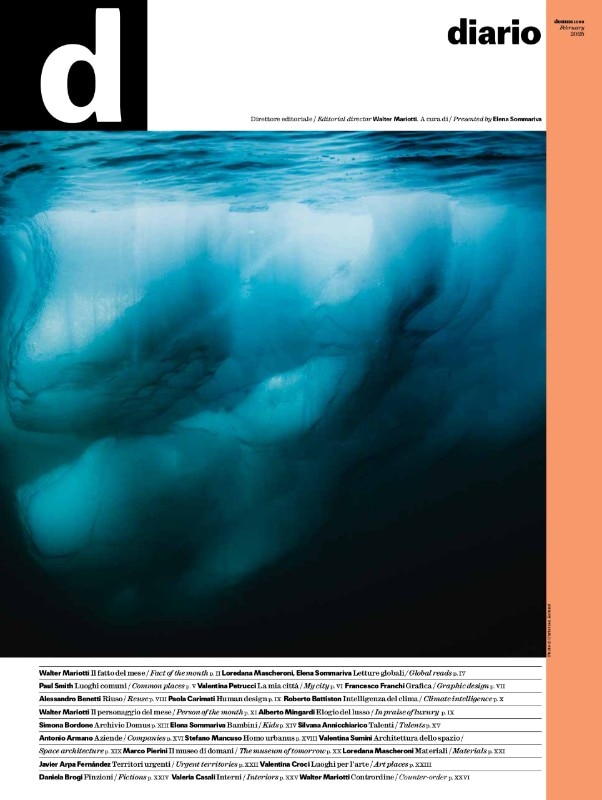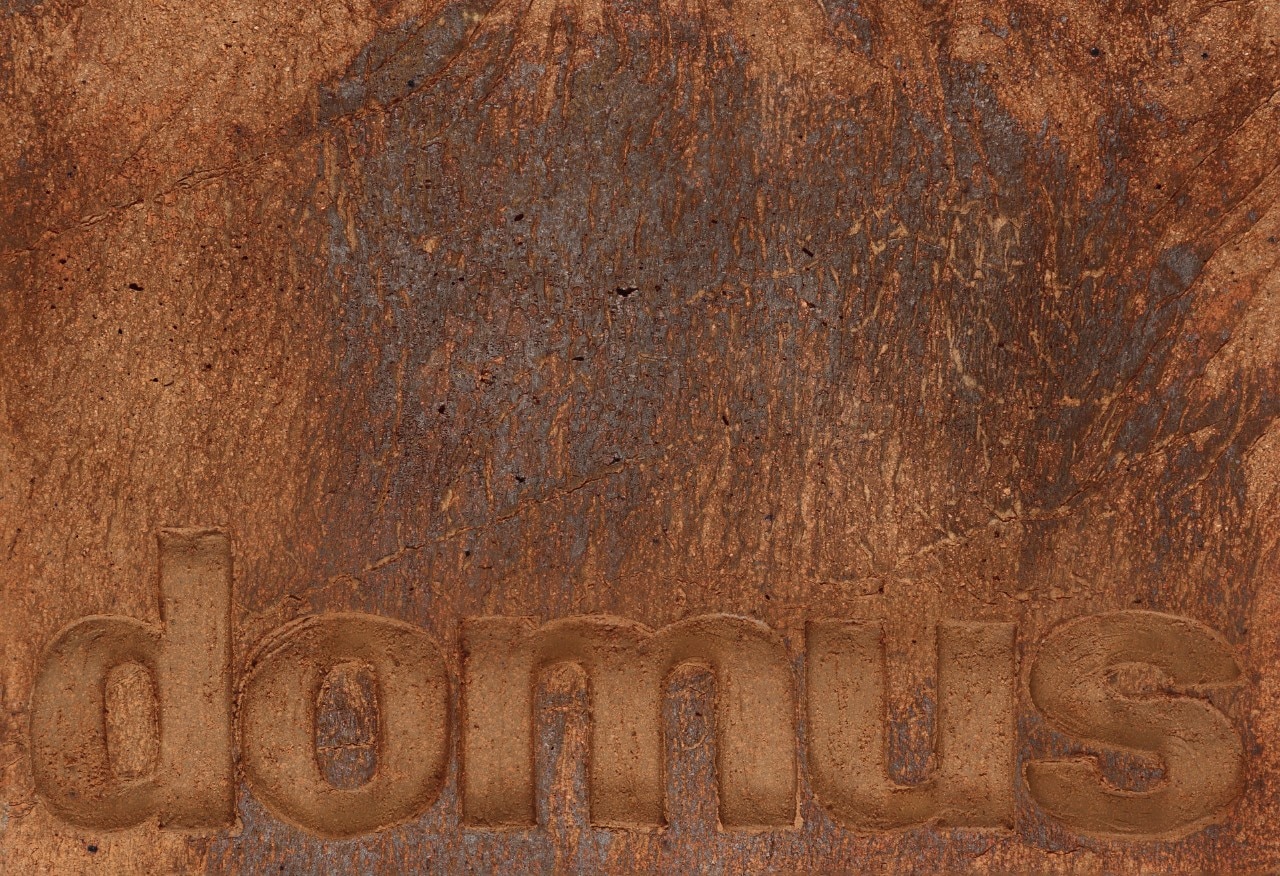At the heart of the February 2025 issue of Domus is the Earth. An ancestral and versatile material, but above all a primordial treasure, earth is experiencing a new wave today, rediscovered by architects and artists who are exploring its current expressive possibilities, igniting an endless journey into the world of the simplest and most natural material.
The second issue signed by Bjarke Ingels, Guest Editor of Domus 2025, is a passionate, original, and in-depth investigation into the various dimensions of human creativity and the ability to transform the most natural and basic element into sophisticated and elaborate architecture, design, and art.
The journey of Domus February begins with Gaudí's daring Catalan vaults, sinuous clay sculptures that defy gravity, moving on to Dieste's complex geometries, where brick becomes a structural and decorative language. A journey that reveals how earth can be molded into forms with expressive power.

We then arrive at the traditional brick houses of Denmark, examples of a functional architecture rooted in the territory, and the historical and contemporary districts of other places in the world where brick and raw earth are protagonists of sustainable and creative building together. An oxymoron, in short, which is a conviction that runs through all of Bjarke's work, which reveals how not only architects but also artists and designers, like new alchemists, are increasingly using earth to create, experimenting with traditional techniques with innovative technologies, in a fruitful dialogue between past and future. Among the contributors to the issue, Jean Dethier explores the work of pioneers such as François Cointeraux and the CRATerre group. Martin Rauch recounts how earth architecture, once linked to hot climates and considered backward, is experiencing a renaissance thanks to its sustainable properties and unique performance. Gramazio Kohler Research has experimented with various techniques, from robotic deposition of clay to the molding of “soft bricks”, up to the impact molding process that allows the construction of more efficient and low-cost earth buildings. Anne Holtrop recounts how Bahrain, once a hub of the pearl trade, preserves precious testimonies of its history and culture.
An ancestral and versatile material, but above all a primordial treasure, earth is experiencing a new wave today, rediscovered by architects and artists.
The Gaoxingli Insun Cinema in Haikou, China, designed by One Plus Partnership, draws inspiration from the union between ocean and earth. And finally, the artist and researcher Davide Ronco uses local materials, especially clay, for his works.
Domus, however, is not only a journey into the world of matter, but also an investigation into contemporary society, civil commitment, politics, and the frontiers of disciplines. The editorial director Walter Mariotti opens the issue and the Diary section, leading us to the Arctic, a crucial territory for the geopolitical and climatic balances of our planet. More precisely in Greenland, a treasure trove of resources and a strategic node, which with the newly installed administration returns to the center of new international dynamics, while climate change, implacable, is rapidly transforming the Arctic landscape.

From his privileged point of view, the stylist Paul Smith demonstrates exceptional columnist skills, reflecting on the challenge of maintaining iconic buildings, such as Terminal 5 at Heathrow, the Centre Pompidou in Paris, and the Lloyd's Building in London. Unique and complex structures, with glass facades and daring exposed structural elements, which require special care to preserve their beauty and functionality over time. As an art historian, Valentina Petrucci meets in her column on the city Daniele Milano, the mayor of Amalfi, one of the capitals of the last two millennia of the West, which he experiences not only as a physical place but as an “inner homeland”. The art director Francesco Franchi instead analyzes the semantics and graphics of the “Conquistiamo il nostro spazio” campaign, conceived by the Milanese studio Leftloft to promote sustainable mobility in the Lombard capital, now a point of reference for global urban policies. A co-design project illuminated with C40 Cities and the Municipality, which through a lively and inclusive design encourages citizens to rediscover the pleasure of using public transport, bicycles or, simply, their own legs. The architectural historian Alessandro Benetti instead reveals the work of the architect Aires Mateus, who has transformed a Salento watchtower into a minimalist house, a perfect example of how the original structure of a historic building can be preserved, integrating it with modern elements and using local materials. Paola Carimati, an analyst attentive to social fragility, underlines the glaring contrast between Meta's choice to abandon inclusion programs and the growing importance given globally to social innovation and collaboration.
The physicist Roberto Battiston, with a mythological metaphor, explains the principles of energy and entropy, linking them to the first and second principles of thermodynamics. Energy is transformed, entropy increases, and man, in his titanic effort to create order, inevitably produces disorder in the universe. Elena Sommariva, a historical signature of the Domus editorial staff, underlines the crucial importance of rethinking spaces to improve people's well-being and promote sustainable construction practices. This leads to two big names in Italian culture, the biologist Stefano Mancuso and the art historian Marco Pierini. The first proposes to apply the biological concept of “metabolism” to cities to face epochal challenges such as global warming. The second analyzes the deposits of museums, often seen as secret places full of hidden wonders, but which in reality are cutting-edge spaces that guard works of art waiting to be exhibited, studied or restored. Finally, Mariotti again pays homage to Oliviero Toscani, a photographer, advertising artist, and activist of international fame who recently passed away. A tribute, however, in true Domus style, which as in a novel by Jules Verne this month makes a journey to the center of the earth to reach the heart of man.





















